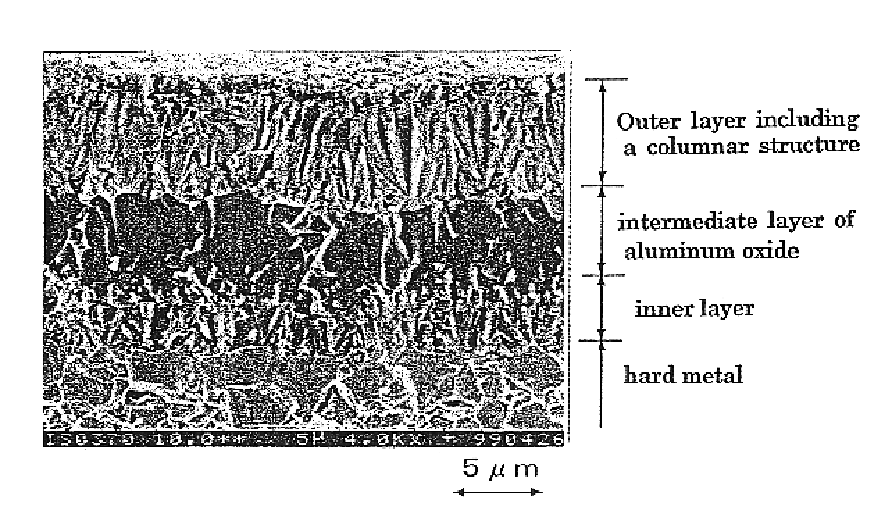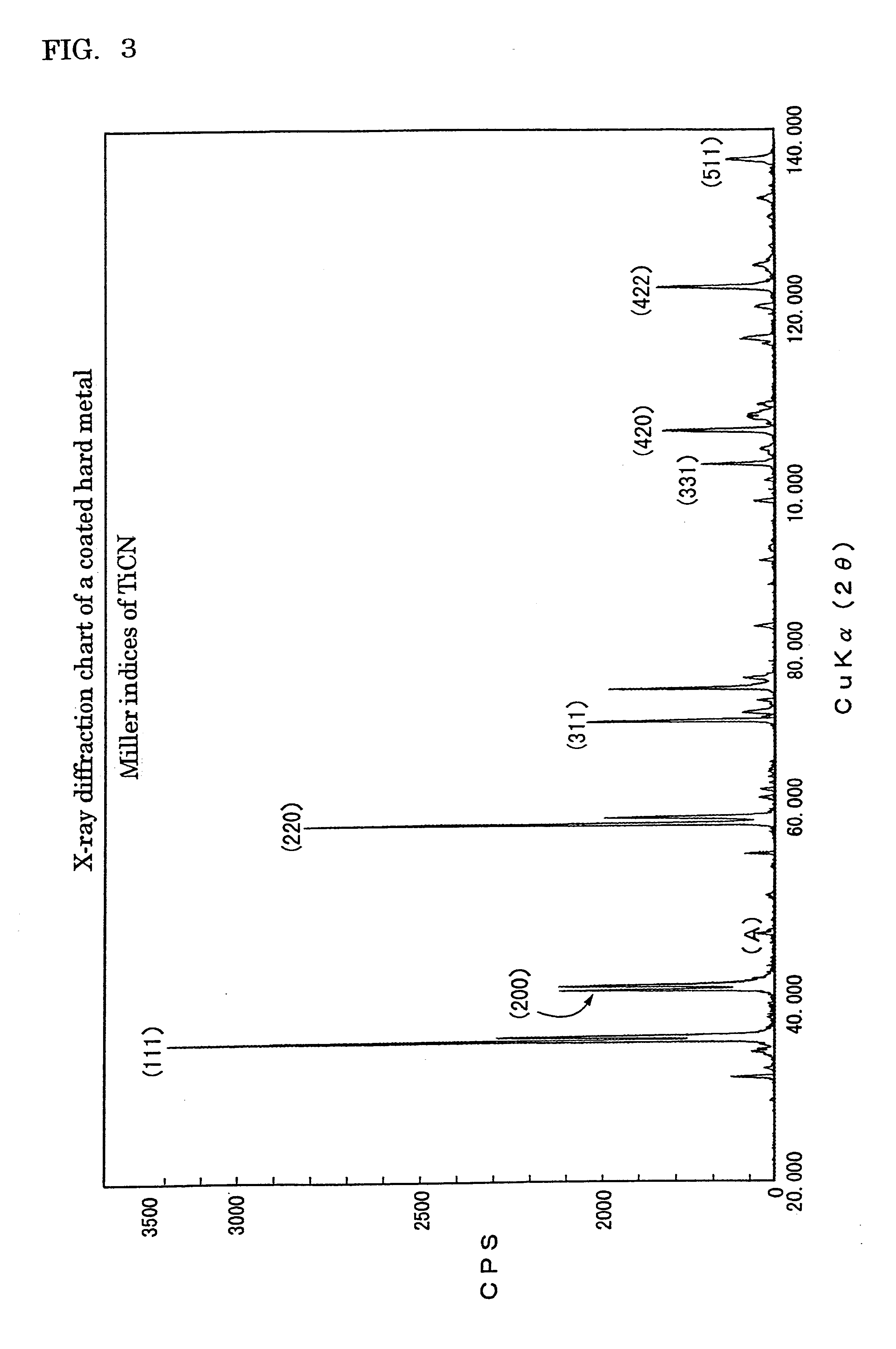Coated hard alloy
a hard alloy and coating technology, applied in the field of coating hard alloys, can solve the problems of accelerating wear, coarsening of crystal grains of the oxide layer constituting the coating, and uneven surface of the tool
- Summary
- Abstract
- Description
- Claims
- Application Information
AI Technical Summary
Benefits of technology
Problems solved by technology
Method used
Image
Examples
embodiment 2
A cemented-carbide tool (type: WNMG120408), composed of 85% WC, 5% TiCN, and 10% Co by weight, having a hard-phase-reduced layer at the surface region was prepared as a hard-metal base material. The base material was placed in a CVD apparatus. The apparatus was evacuated and heated to a temperature of 1,050.degree. C. A mixed gas of 2.5% ZrCl.sub.4, 25% nitrogen, and hydrogen as the remainder by volume was introduced into the apparatus to form a ZrN layer, 0.5 .mu.m in thickness, on the base material. Next, a mixed gas of 1% AlCl.sub.4, 0.5% ZrCl.sub.4, 0.2% H.sub.2 S, 4% CO, and hydrogen as the remainder by volume was introduced into the CVD apparatus heated at 1,000.degree. C. to form an intermediate layer, made of a solid solution of aluminum oxide and zirconium oxide, having a thickness of 10 .mu.m.
Direct formation of a titanium carbonitride layer on the intermediate layer tends to facilitate flaking. To avoid this tendency, a zirconium carbide layer, 1.5 .mu.m in thickness, was...
embodiment 3
As a material for a hard-metal base material, a powder for a cemented carbide composed of 84% WC, 4% TiC, 2% ZrC, 2% NbC, and 8% Co by weight was pressed. The pressed body was sintered in a vacuum at a temperature of 1,400.degree. C. for one hour. The sintered body was subjected to surface polishing and cutting-edge treatment. Thus, a cemented-carbide base material consisting mainly of tungsten carbide and having a shape of ISO CNMG120408 was prepared. On the surface of this base material, a hard coating was formed by using the CVD method.
Table I shows typical manufacturing conditions for the coatings used in the present invention. In the examples below, the layers were formed by controlling only the coating time under the conditions shown in Table I unless otherwise specifically expressed.
Table II shows the constitutions and the thicknesses of the inner layers of the various samples. Table III shows the constitutions, the thicknesses, and the .alpha.-type aluminum oxide' s oriented...
PUM
| Property | Measurement | Unit |
|---|---|---|
| temperature | aaaaa | aaaaa |
| thickness | aaaaa | aaaaa |
| length | aaaaa | aaaaa |
Abstract
Description
Claims
Application Information
 Login to View More
Login to View More - R&D
- Intellectual Property
- Life Sciences
- Materials
- Tech Scout
- Unparalleled Data Quality
- Higher Quality Content
- 60% Fewer Hallucinations
Browse by: Latest US Patents, China's latest patents, Technical Efficacy Thesaurus, Application Domain, Technology Topic, Popular Technical Reports.
© 2025 PatSnap. All rights reserved.Legal|Privacy policy|Modern Slavery Act Transparency Statement|Sitemap|About US| Contact US: help@patsnap.com



